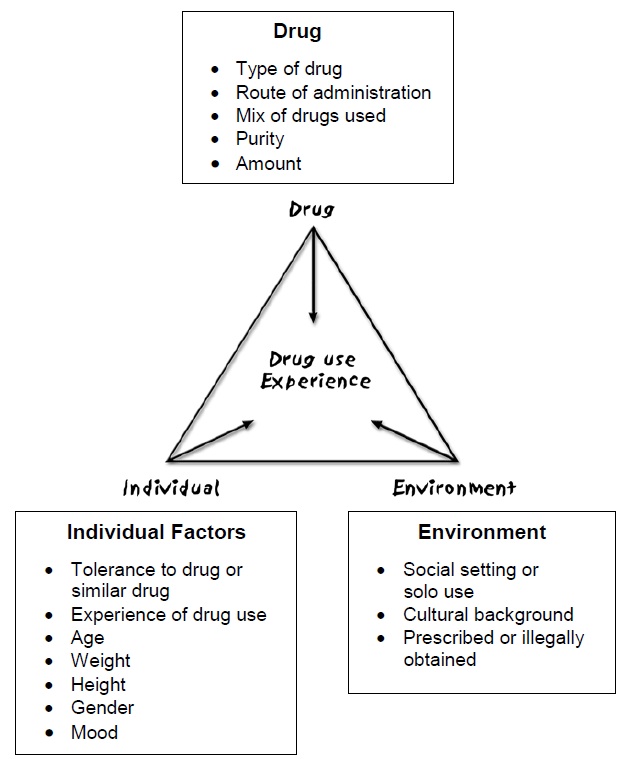Like the bio-psycho-social model, the public health model proposes that a comprehensive range of factors must be addressed. No single factor is considered sufficient for understanding drug use or the problems that may arise. In line with public health theory, an approach that focuses on only one aspect of drug using behaviour is likely to be limited in its ability to find meaningful solutions.
The public health approach:
- Acknowledges that drugs can be both beneficial and hazardous
- Recognises significant individual differences in susceptibility to drug problems.
- Stresses the relevance of social and environmental factors in determining rates of drug use and related problems.
- Highlights the importance of influences such as the availability and promotion of drugs.
- Drug use is understood as occurring for a number of reasons and occurs along a continuum, between abstinence and harmful drug use
The model of public health explains the reasons for drug use as relating to the:
- Individual: the characteristic of the individual including attitudes, values and personality structure
- Drug: the characteristics of the drug or drugs of choice e.g. the pharmacological action of the substance
- Environment: the environment in which drug use occurs e.g. the influence of the physical and social setting within which use occurs
These categories can also be a helpful way of identifying the range of harms that young people can experience due to their drug use and the focus of strategies to reduce harm related to drug use. This approach is also referred to as the Interaction Model.

The Public Health Model (Australian Dept. of Health & Aging)
A range of interventions is offered to suit the many different types of people affected. From a public health perspective, these would include harm reduction strategies and structural changes to the environment, as well as treatment interventions.
